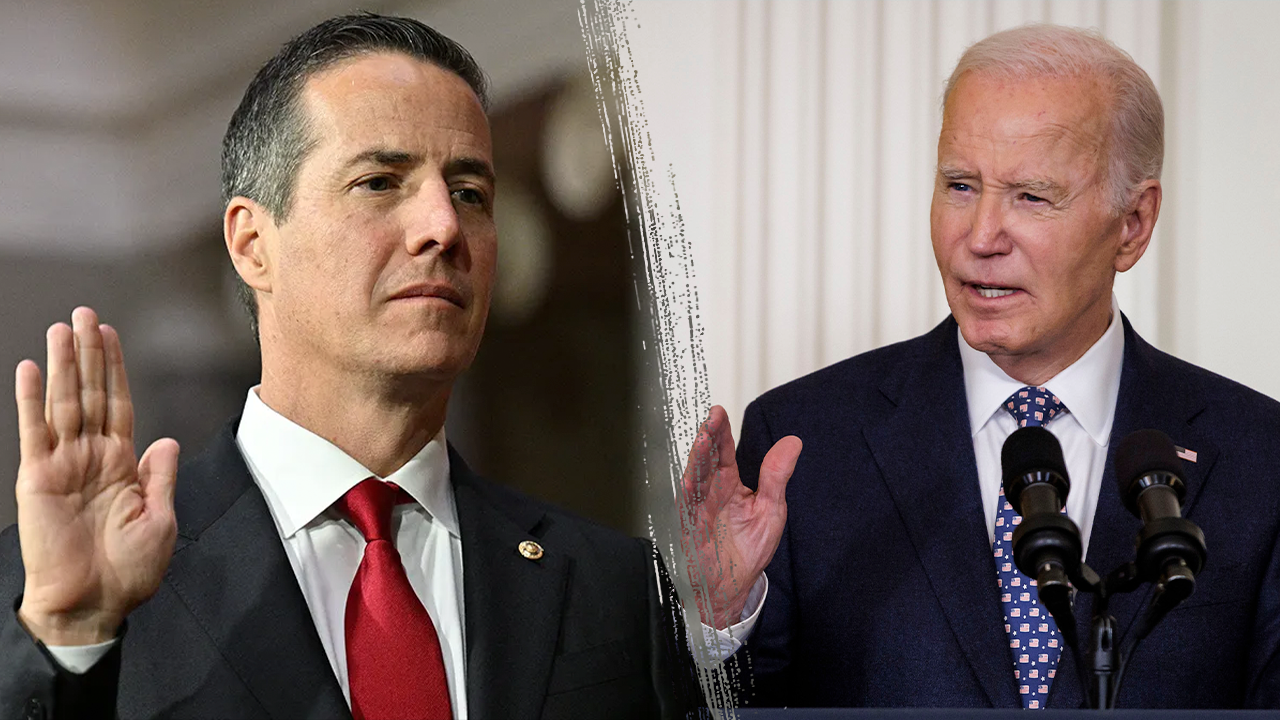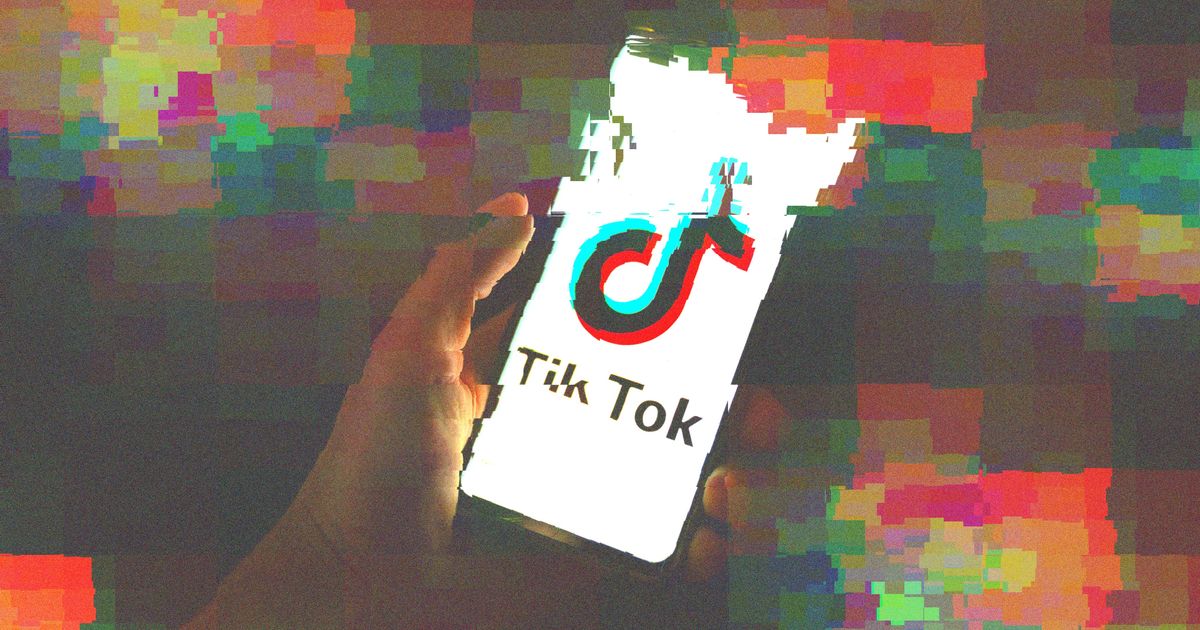Business
Video game actors are going on strike after contract talks fail over AI terms

Video game performers are going on strike for the second time in a decade.
Duncan Crabtree-Ireland, national executive director and chief negotiator of performers union SAG-AFTRA, called a strike Thursday on behalf of thousands of video game actors covered by the Interactive Media Agreement. The strike takes effect at 12:01 a.m. Friday.
The announcement came days after the national board of the Screen Actors Guild-American Federation of Television and Radio Artists granted Crabtree-Ireland the authority to initiate a walkout and nearly a year after union members voted overwhelmingly to authorize a strike.
On Saturday, SAG-AFTRA warned that a work stoppage was imminent if the union and the video game producers could not iron out contract terms related to artificial intelligence.
“We’re not going to consent to a contract that allows companies to abuse A.I. to the detriment of our members. Enough is enough. When these companies get serious about offering an agreement our members can live — and work — with, we will be here, ready to negotiate,” SAG-AFTRA President Fran Drescher said in a statement.
The Interactive Media Agreement — a contract covering roughly 2,600 performers who do voice-over and motion-capture work in the video game industry — expired in November 2022.
“We are disappointed the union has chosen to walk away when we are so close to a deal, and we remain prepared to resume negotiations,” Audrey Cooling, a spokesperson for the video game producers, said in a statement.
“We have already found common ground on 24 out of 25 proposals, including historic wage increases and additional safety provisions. Our offer is directly responsive to SAG-AFTRA’s concerns and extends meaningful AI protections that include requiring consent and fair compensation to all performers working under the IMA. These terms are among the strongest in the entertainment industry.”
Game actors are seeking a new deal that would require producers to obtain their consent before reproducing their voices or likenesses with AI. They also have demanded compensation when AI is used to replicate their performances, as well as wage increases, more rest time and set medics for hazardous jobs.
Performers in the video game industry say they are especially vulnerable to AI due to the invisible nature of voice-over work.
“Our resolve is unwavering and should not be tested,” Crabtree-Ireland said in a statement released Saturday.
“We are steadfast in our commitment to our membership who work this contract and whose extraordinary performances are the heart and soul of the world’s most popular video games. Time is running out for the companies to make a deal.”
Cooling replied that the companies were negotiating “in good faith” and pointed out that the two parties had “reached tentative agreements on the vast majority of the proposals.”
“Based on that progress, we remain optimistic that a deal is within reach,” she said.
Video game actors last went on strike in October 2016, before AI was a major concern.
Back then, performers were seeking residual-like payments based on the number of physical and digital game copies sold — similar to how film and TV actors are compensated for their work.
Both residuals and AI emerged as sticking points during last year’s strike by Hollywood actors. That walkout lasted 118 days and culminated in an agreement containing wage increases, AI protections and streaming bonuses, among other gains.

Business
In Los Angeles, Hotels Become a Refuge for Fire Evacuees

The lobby of Shutters on the Beach, the luxury oceanfront hotel in Santa Monica that is usually abuzz with tourists and entertainment professionals, had by Thursday transformed into a refuge for Los Angeles residents displaced by the raging wildfires that have ripped through thousands of acres and leveled entire neighborhoods to ash.
In the middle of one table sat something that has probably never been in the lobby of Shutters before: a portable plastic goldfish tank. “It’s my daughter’s,” said Kevin Fossee, 48. Mr. Fossee and his wife, Olivia Barth, 45, had evacuated to the hotel on Tuesday evening shortly after the fire in the Los Angeles Pacific Palisades area flared up near their home in Malibu.
Suddenly, an evacuation alert came in. Every phone in the lobby wailed at once, scaring young children who began to cry inconsolably. People put away their phones a second later when they realized it was a false alarm.
Similar scenes have been unfolding across other Los Angeles hotels as the fires spread and the number of people under evacuation orders soars above 100,000. IHG, which includes the Intercontinental, Regent and Holiday Inn chains, said 19 of its hotels across the Los Angeles and Pasadena areas were accommodating evacuees.
The Palisades fire, which has been raging since Tuesday and has become the most destructive in the history of Los Angeles, struck neighborhoods filled with mansions owned by the wealthy, as well as the homes of middle-class families who have owned them for generations. Now they all need places to stay.
Many evacuees turned to a Palisades WhatsApp group that in just a few days has grown from a few hundred to over 1,000 members. Photos, news, tips on where to evacuate, hotel discount codes and pet policies were being posted with increasing rapidity as the fires spread.
At the midcentury modern Beverly Hilton hotel, which looms over the lawns and gardens of Beverly Hills, seven miles and a world away from the ash-strewed Pacific Palisades, parking ran out on Wednesday as evacuees piled in. Guests had to park in another lot a mile south and take a shuttle back.
In the lobby of the hotel, which regularly hosts glamorous events like the recent Golden Globe Awards, guests in workout clothes wrestled with children, pets and hastily packed roll-aboards.
Many of the guests were already familiar with each other from their neighborhoods, and there was a resigned intimacy as they traded stories. “You can tell right away if someone is a fire evacuee by whether they are wearing sweats or have a dog with them,” said Sasha Young, 34, a photographer. “Everyone I’ve spoken with says the same thing: We didn’t take enough.”
The Hotel June, a boutique hotel with a 1950s hipster vibe a mile north of Los Angeles International Airport, was offering evacuees rooms for $125 per night.
“We were heading home to the Palisades from the airport when we found out about the evacuations,” said Julia Morandi, 73, a retired science educator who lives in the Palisades Highlands neighborhood. “When we checked in, they could see we were stressed, so the manager gave us drinks tickets and told us, ‘We take care of our neighbors.’”
Hotels are also assisting tourists caught up in the chaos, helping them make arrangements to fly home (as of Friday, the airport was operating normally) and waiving cancellation fees. A spokeswoman for Shutters said its guests included domestic and international tourists, but on Thursday, few could be spotted among the displaced Angelenos. The heated outdoor pool that overlooks the ocean and is usually surrounded by sunbathers was completely deserted because of the dangerous air quality.
“I think I’m one of the only tourists here,” said Pavel Francouz, 34, a hockey scout who came to Los Angeles from the Czech Republic for a meeting on Tuesday before the fires ignited.
“It’s weird to be a tourist,” he said, describing the eerily empty beaches and the hotel lobby packed with crying children, families, dogs and suitcases. “I can’t imagine what it would feel like to be these people,” he said, adding, “I’m ready to go home.”
Follow New York Times Travel on Instagram and sign up for our weekly Travel Dispatch newsletter to get expert tips on traveling smarter and inspiration for your next vacation. Dreaming up a future getaway or just armchair traveling? Check out our 52 Places to Go in 2025.
Business
Downtown Los Angeles Macy's is among 150 locations to close

The downtown Los Angeles Macy’s department store, situated on 7th Street and a cornerstone of retail in the area, will shut down as the company prepares to close 150 underperforming locations in an effort to revamp and modernize its business.
The iconic retail center announced this week the first 66 closures, including nine in California spanning from Sacramento to San Diego. Stores will also close in Florida, New York and Georgia, among other states. The closures are part of a broader company strategy to bolster sustainability and profitability.
Macy’s is not alone in its plan to slim down and rejuvenate sales. The retailer Kohl’s announced on Friday that it would close 27 poor performing stores by April, including 10 in California and one in the Los Angeles neighborhood of Westchester. Kohl’s will also shut down its San Bernardino e-commerce distribution center in May.
“Kohl’s continues to believe in the health and strength of its profitable store base” and will have more than 1,100 stores remaining after the closures, the company said in a statement.
Macy’s announced its plan last February to end operations at roughly 30% of its stores by 2027, following disappointing quarterly results that included a $71-million loss and nearly 2% decline in sales. The company will invest in its remaining 350 stores, which have the potential to “generate more meaningful value,” according to a release.
“We are closing underproductive Macy’s stores to allow us to focus our resources and prioritize investments in our go-forward stores, where customers are already responding positively to better product offerings and elevated service,” Chief Executive Tony Spring said in a statement. “Closing any store is never easy.”
Macy’s brick-and-mortar locations also faced a setback in January 2024, when the company announced the closures of five stores, including the location at Simi Valley Town Center. At the same time, Macy’s said it would layoff 3.5% of its workforce, equal to about 2,350 jobs.
Farther north, Walgreens announced this week that it would shutter 12 stores across San Francisco due to “increased regulatory and reimbursement pressures,” CBS News reported.
Business
The justices are expected to rule quickly in the case.

When the Supreme Court hears arguments on Friday over whether protecting national security requires TikTok to be sold or closed, the justices will be working in the shadow of three First Amendment precedents, all influenced by the climate of their times and by how much the justices trusted the government.
During the Cold War and in the Vietnam era, the court refused to credit the government’s assertions that national security required limiting what newspapers could publish and what Americans could read. More recently, though, the court deferred to Congress’s judgment that combating terrorism justified making some kinds of speech a crime.
The court will most likely act quickly, as TikTok faces a Jan. 19 deadline under a law enacted in April by bipartisan majorities. The law’s sponsors said the app’s parent company, ByteDance, is controlled by China and could use it to harvest Americans’ private data and to spread covert disinformation.
The court’s decision will determine the fate of a powerful and pervasive cultural phenomenon that uses a sophisticated algorithm to feed a personalized array of short videos to its 170 million users in the United States. For many of them, and particularly younger ones, TikTok has become a leading source of information and entertainment.
As in earlier cases pitting national security against free speech, the core question for the justices is whether the government’s judgments about the threat TikTok is said to pose are sufficient to overcome the nation’s commitment to free speech.
Senator Mitch McConnell, Republican of Kentucky, told the justices that he “is second to none in his appreciation and protection of the First Amendment’s right to free speech.” But he urged them to uphold the law.
“The right to free speech enshrined in the First Amendment does not apply to a corporate agent of the Chinese Communist Party,” Mr. McConnell wrote.
Jameel Jaffer, the executive director of the Knight First Amendment Institute at Columbia University, said that stance reflected a fundamental misunderstanding.
“It is not the government’s role to tell us which ideas are worth listening to,” he said. “It’s not the government’s role to cleanse the marketplace of ideas or information that the government disagrees with.”
The Supreme Court’s last major decision in a clash between national security and free speech was in 2010, in Holder v. Humanitarian Law Project. It concerned a law that made it a crime to provide even benign assistance in the form of speech to groups said to engage in terrorism.
One plaintiff, for instance, said he wanted to help the Kurdistan Workers’ Party find peaceful ways to protect the rights of Kurds in Turkey and to bring their claims to the attention of international bodies.
When the case was argued, Elena Kagan, then the U.S. solicitor general, said courts should defer to the government’s assessments of national security threats.
“The ability of Congress and of the executive branch to regulate the relationships between Americans and foreign governments or foreign organizations has long been acknowledged by this court,” she said. (She joined the court six months later.)
The court ruled for the government by a 6-to-3 vote, accepting its expertise even after ruling that the law was subject to strict scrutiny, the most demanding form of judicial review.
“The government, when seeking to prevent imminent harms in the context of international affairs and national security, is not required to conclusively link all the pieces in the puzzle before we grant weight to its empirical conclusions,” Chief Justice John G. Roberts Jr. wrote for the majority.
In its Supreme Court briefs defending the law banning TikTok, the Biden administration repeatedly cited the 2010 decision.
“Congress and the executive branch determined that ByteDance’s ownership and control of TikTok pose an unacceptable threat to national security because that relationship could permit a foreign adversary government to collect intelligence on and manipulate the content received by TikTok’s American users,” Elizabeth B. Prelogar, the U.S. solicitor general, wrote, “even if those harms had not yet materialized.”
Many federal laws, she added, limit foreign ownership of companies in sensitive fields, including broadcasting, banking, nuclear facilities, undersea cables, air carriers, dams and reservoirs.
While the court led by Chief Justice Roberts was willing to defer to the government, earlier courts were more skeptical. In 1965, during the Cold War, the court struck down a law requiring people who wanted to receive foreign mail that the government said was “communist political propaganda” to say so in writing.
That decision, Lamont v. Postmaster General, had several distinctive features. It was unanimous. It was the first time the court had ever held a federal law unconstitutional under the First Amendment’s free expression clauses.
It was the first Supreme Court opinion to feature the phrase “the marketplace of ideas.” And it was the first Supreme Court decision to recognize a constitutional right to receive information.
That last idea figures in the TikTok case. “When controversies have arisen,” a brief for users of the app said, “the court has protected Americans’ right to hear foreign-influenced ideas, allowing Congress at most to require labeling of the ideas’ origin.”
Indeed, a supporting brief from the Knight First Amendment Institute said, the law banning TikTok is far more aggressive than the one limiting access to communist propaganda. “While the law in Lamont burdened Americans’ access to specific speech from abroad,” the brief said, “the act prohibits it entirely.”
Zephyr Teachout, a law professor at Fordham, said that was the wrong analysis. “Imposing foreign ownership restrictions on communications platforms is several steps removed from free speech concerns,” she wrote in a brief supporting the government, “because the regulations are wholly concerned with the firms’ ownership, not the firms’ conduct, technology or content.”
Six years after the case on mailed propaganda, the Supreme Court again rejected the invocation of national security to justify limiting speech, ruling that the Nixon administration could not stop The New York Times and The Washington Post from publishing the Pentagon Papers, a secret history of the Vietnam War. The court did so in the face of government warnings that publishing would imperil intelligence agents and peace talks.
“The word ‘security’ is a broad, vague generality whose contours should not be invoked to abrogate the fundamental law embodied in the First Amendment,” Justice Hugo Black wrote in a concurring opinion.
The American Civil Liberties Union told the justices that the law banning TikTok “is even more sweeping” than the prior restraint sought by the government in the Pentagon Papers case.
“The government has not merely forbidden particular communications or speakers on TikTok based on their content; it has banned an entire platform,” the brief said. “It is as though, in Pentagon Papers, the lower court had shut down The New York Times entirely.”
Mr. Jaffer of the Knight Institute said the key precedents point in differing directions.
“People say, well, the court routinely defers to the government in national security cases, and there is obviously some truth to that,” he said. “But in the sphere of First Amendment rights, the record is a lot more complicated.”
-

 Business1 week ago
Business1 week agoThese are the top 7 issues facing the struggling restaurant industry in 2025
-

 Culture1 week ago
Culture1 week agoThe 25 worst losses in college football history, including Baylor’s 2024 entry at Colorado
-

 Sports1 week ago
Sports1 week agoThe top out-of-contract players available as free transfers: Kimmich, De Bruyne, Van Dijk…
-

 Politics1 week ago
Politics1 week agoNew Orleans attacker had 'remote detonator' for explosives in French Quarter, Biden says
-

 Politics1 week ago
Politics1 week agoCarter's judicial picks reshaped the federal bench across the country
-

 Politics6 days ago
Politics6 days agoWho Are the Recipients of the Presidential Medal of Freedom?
-

 Health5 days ago
Health5 days agoOzempic ‘microdosing’ is the new weight-loss trend: Should you try it?
-

 World1 week ago
World1 week agoIvory Coast says French troops to leave country after decades













